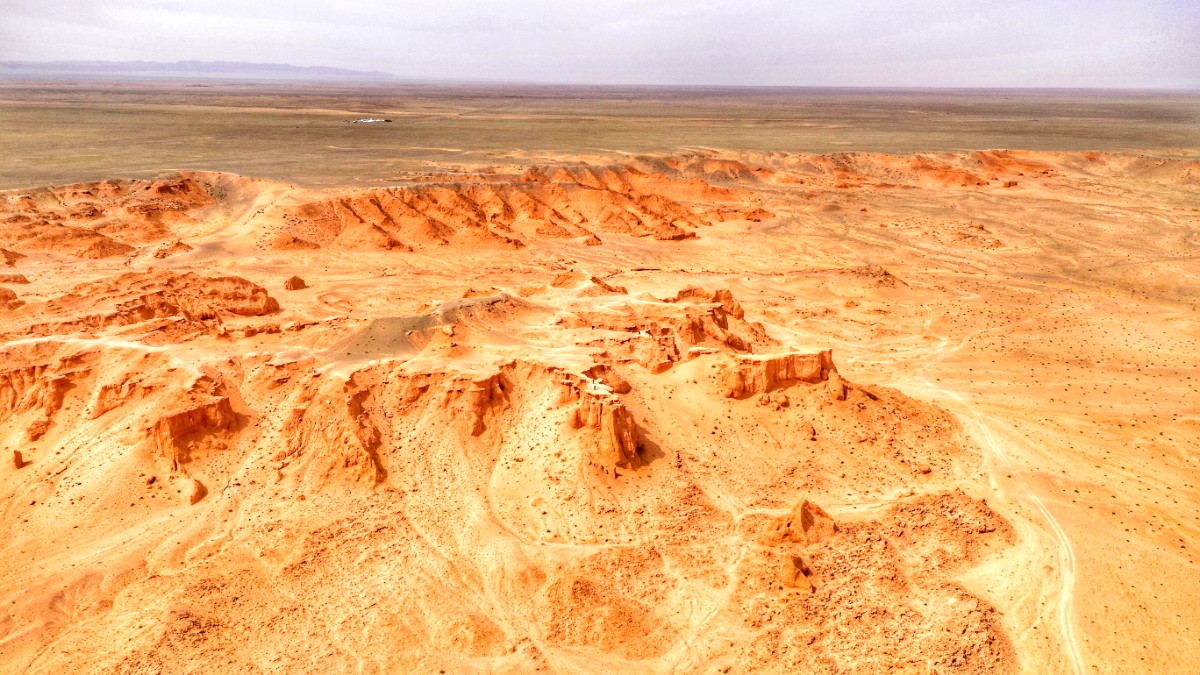
Mongolia
Mongolian cuisine is heavily influenced by the nomadic lifestyle and the harsh climate. It relies mainly on meat (mutton, beef, goat, horse) and dairy products from livestock.
Vegetables were historically scarce due to limited agriculture, though their use has increased in modern dishes. Cooking methods are simple, often involving boiling or steaming, designed for efficiency and nutrient retention.
Mutton (хонь), beef (үхэр), goat (ямаа), and horse (адуу) are staple proteins.
Milk, yogurt (тараг), dried curds (ааруул), and fermented mare's milk (айраг) are fundamental to the diet.
Flour is used for noodles and dumplings. Potatoes, carrots, cabbage, and onions are common in modern dishes, especially in ger camps and towns. Flavors are often simple and savory; spices are used sparingly. Salt is a common seasoning.
Steamed dumplings filled with minced meat (usually mutton or beef) and onion. A staple dish, often served during holidays.
Find them everywhere.
Fried, flat meat patties, similar to a fried buuz. Very popular, especially at festivals like Naadam.
Find them everywhere.
Fried noodles with meat and some vegetables. A comforting, hearty dish.
Find it in ger camps and local eateries.
Traditional Mongolian milk tea. Often salty, made with milk, water, and sometimes butter or rice. Offered everywhere as a sign of hospitality.
Aaruul are dried milk curds, a staple snack. Airag is fermented mare's milk, a mildly alcoholic traditional beverage, popular in summer. Both are found in ger camps and nomadic homes.
These are not available in the Gobi Desert. Fine dining is exclusively found in Ulaanbaatar.
Mid-range restaurants are limited to provincial centers like Dalanzadgad, offering basic Mongolian cuisine.
Aaruul (dried curds) and boortsog (fried dough cookies) are common snacks. Desserts are generally not a prominent part of traditional Mongolian cuisine.
Traditional Mongolian cuisine is very meat and dairy-centric. Vegetarian options are limited to simple vegetable stir-fries, rice, or potato dishes if available.
Vegan options are more difficult due to dairy. Inform your tour operator well in advance. Bringing supplementary snacks is advisable.
Gluten-free is difficult due to flour in many traditional dishes. Communicate clearly with your tour operator. Nuts are not common, but dairy and meat are ubiquitous. Cross-contamination poses a risk in small kitchens.
Halal and kosher options are not available in the Gobi. Your tour operator is the most important resource for dietary needs.
Formal classes are not widely available. Informal cooking demonstrations like making buuz or milking animals might be offered at nomadic homestays or cultural tours.
Visits to nomadic families allow insight into dairy production (making aaruul, airag) and livestock management, offering a direct connection to the food source.
No major food festivals are specific to the Gobi. The Naadam festival in July features traditional foods like Khuushuur nationwide.
Meals are served in a central dining ger, often creating a social experience shared with other travelers.
Always accept offered food or drink as a sign of respect for your hosts.
Use your right hand or both hands when giving or receiving items.
Vegetarian and vegan options are very limited. Inform your tour operator well in advance about any specific dietary restrictions.
Bringing supplementary snacks is recommended for strict diets.
The Gobi does not have formal culinary schools or extensive food tours. Cultural exchange with nomadic families is the best way to learn about local food preparation.
Formal cooking classes and food tours are not widely available in the Gobi. Some nomadic homestays or cultural tours might offer informal cooking demonstrations.
Visits to nomadic families allow insight into dairy production and livestock management.
No major food festivals are specific to the Gobi. The Naadam festival in July features traditional foods nationwide.
A mildly alcoholic beverage, especially popular in summer. Offered in nomadic homes and some ger camps.
A unique taste, a must-try for cultural immersion.
Arkhi is distilled milk vodka or spirit. Commercial Mongolian vodka is also available.
Often shared as part of hospitality rituals.
Vegetables are less common in traditional dishes; inform your tour operator for specific needs.
In ger camps, meals are typically served at set times according to the tour schedule.
Dining in the Gobi is a cultural experience rather than a gastronomic one in the conventional sense.
Always carry some snacks, especially if you have strict dietary requirements or preferences. Consider bringing some instant coffee or tea if preferred over Mongolian milk tea.